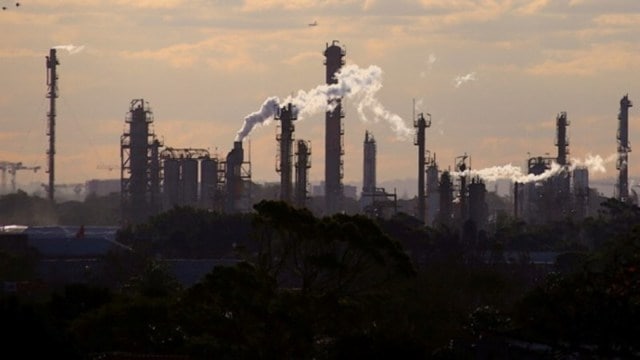WMO Climate Forecast 2025–2029
- 30 May 2025
In News:
The World Meteorological Organization (WMO) has released its latest decadal climate forecast (2025–2029), warning of a continued trend of record-breaking global temperatures. This projection raises serious concerns about climate risks, sustainable development, and international climate commitments under the Paris Agreement.
Key Projections:
- Annual Global Temperature Rise: Each year from 2025–2029 is projected to be 1.2°C to 1.9°C above pre-industrial levels (1850–1900).
- Record Heat Likelihood:
- 80% chance that at least one year will surpass 2024, currently the warmest year on record.
- 86% probability that one year will exceed the 1.5°C threshold.
- Five-Year Mean Warming: 70% chance that the 2025–2029 average will be above 1.5°C, a sharp rise from 47% (2024–2028) and 32% (2023–2027).
Note: The Paris Agreement’s 1.5°C limit refers to long-term (20-year) averages, but short-term overshoots are now increasingly probable.
Regional and Thematic Insights:
1. Arctic Amplification: Arctic winters (Nov–Mar) are projected to be 2.4°C warmer than the 1991–2020 average—3.5× faster than the global rate.
2. Sea Ice Decline: Continued sea ice reduction is expected in the Barents Sea, Bering Sea, and Sea of Okhotsk, impacting marine biodiversity and indigenous livelihoods.
3. Precipitation Variability:
- Wetter-than-average conditions likely in:
- Sahel region
- Northern Europe
- Alaska and Northern Siberia
- Drier conditions expected over:
- Amazon Basin
- Parts of South Asia
South Asia may witness generally wet years, though seasonal variability will persist.
Impact and Implications:
- Extreme Weather Events: Increased warming will fuel more intense heatwaves, extreme rainfall, droughts, and floods, stressing both urban systems and agriculture.
- Cryosphere and Ocean Changes:
- Accelerated glacier and sea ice melt will raise sea levels.
- Ocean heating contributes to acidification and marine biodiversity loss.
- Threat to Sustainable Development: Progress on SDGs, particularly food security, water availability, and health, is at risk in vulnerable regions.
Way Forward:
- Revise NDCs at COP30: Strengthen and align Nationally Determined Contributions (NDCs) with the 1.5°C goal.
- Accelerate Clean Energy Transition: Promote renewables, energy efficiency, and net-zero strategies to reduce GHG emissions.
- Adaptation and Resilience: Invest in climate-resilient infrastructure and early warning systems.
- Climate Monitoring & Forecasting: Enhance WMO-led regional forecasts and risk assessment tools.
- Preserve Natural Carbon Sinks: Protect forests, wetlands, and oceans to mitigate atmospheric CO?.
Greenhouse Gas Levels Hit Record High in 2023: World Meteorological Organization (WMO)

- 29 Oct 2024
In News:
According to the WMO, the last time the earth had a similar CO2 concentration was 3-5 million years ago, when temperatures were 2-3°C higher and sea levels were 10-20 metres higher than they are now
Key Highlights:
- Record High Greenhouse Gas (GHG) Levels:
- In 2023, annual mean carbon dioxide (CO2) levels rose by 2.3 parts per million (ppm), reaching a new record of 420 ppm.
- This marks the 12th consecutive year with an increase of over 2 ppm in CO2 levels.
- Historical Context:
- CO2 levels not seen in 3-5 million years, when temperatures were 2-3°C higher, and sea levels were 10-20 meters higher than they are today.
- Key GHGs at Record Highs:
- The globally averaged surface concentrations of CO2, methane, and nitrous oxide all reached new highs in 2023.
- Contributors to the Increase in CO2:
- Natural Variability: Natural factors such as large vegetation fires and reduced carbon absorption by forests contributed to higher CO2 levels.
- Human Activity: High fossil fuel emissions from human and industrial activities also played a major role.
- El Niño Phenomenon: The El Niño event led to higher temperatures and drier conditions, exacerbating the rise in GHG levels through increased wildfires and reduced carbon absorption by land sinks.
- Climate Feedback Loop Concerns:
- The WMO warned of a vicious cycle:
- Climate change could cause ecosystems to become larger sources of GHGs.
- Wildfires could release more carbon, and warmer oceans may absorb less CO2, leading to more CO2 remaining in the atmosphere, accelerating global warming.
- The WMO warned of a vicious cycle:
- Radiative Forcing:
- Radiative forcing (the warming effect on climate) from long-lived GHGs has increased by 51.5% from 1990 to 2023, with CO2 contributing 81% of this increase.
- Methane Concerns:
- Methane saw its largest three-year increase between 2020 and 2022.
- This increase was linked to warmer temperatures and wetter land conditions during the 2020-2022 La Niña conditions, which caused an uptick in methane emissions from natural wetlands.
- Long-Term Impact of CO2:
- Given CO2's long atmospheric lifetime, even with rapid emissions reductions, the warming effect will persist for several decades.
